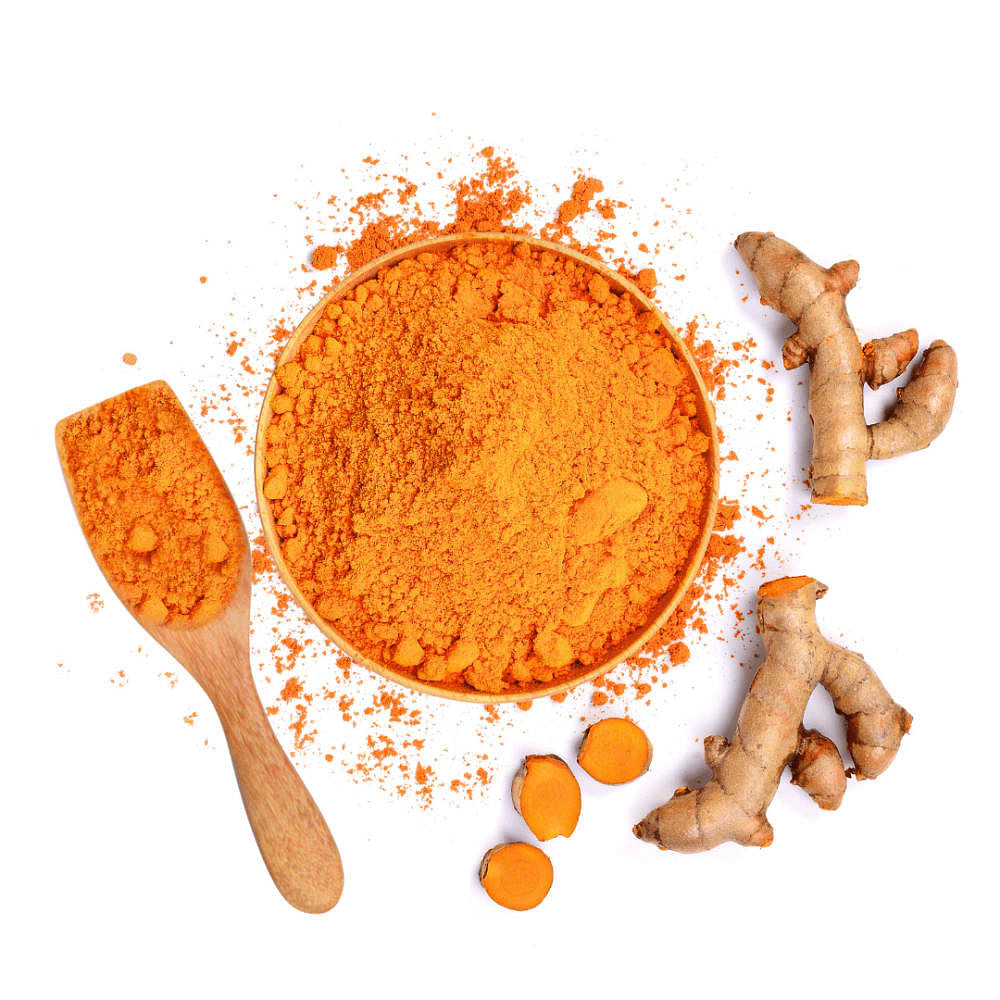Haridra or Haldi is a therapeutic treasure that one commonly finds in the Indian kitchen. Turmeric is scientifically known as Curcuma Longa. It is helpful against body aches, skin problems, and even diseases like diabetes. It comes mainly from the tuberous roots of the turmeric plants, which are yellowish-orange in colour.
How to consume Haridra for medicinal uses?
One can consume it with lukewarm water or honey for medicinal purposes. It can be in powder form (1-3gms), fresh turmeric root juice 1-2 ml, or decoction 50-100ml (1:20 ratio). How does one make the decoction? By boiling one part of Haridra in twenty parts of water. It should be consumed one to two times a day on an empty stomach.
Haridra Benefits
Read on to know just how you can monopolize on Haridra or Haridrakhand uses:
Haridra for body aches and injuries
How does it help?
As per studies, Curcumin is an active compound of turmeric with antioxidant and anti-inflammatory properties that help heal and reduce pain.
Dosage:
A) Drink 150 ml of warm milk with 1-3gm of Haridra
B) Haridra paste (Haridra + Lukewarm water) can be directly applied as a warm paste over the affected areas
Also read: Shatapushpa benefits
Haridra for skin problems
How does it help?
As per studies, It is an effective remedy for allergy care in the Ayurveda discipline. The anti-inflammatory properties reduce swelling and relax the skin from within.
Dosage: Haridra paste (Haridra + Lukewarm water) can be directly applied as a paste over the affected areas of the skin.
Haridra for beauty and face care
How does it help?
Due to its antibacterial and antifungal effects, it helps in getting healthy skin by reducing acne, dark spots, and scarring. It has skin-lightening properties that help with pigmentation.
Dosage: Apply fresh Haridra paste with milk all over the face or over the pigmented areas. It gradually reduces the pigmentation.
Haridra for diabetes
How does it help?
Studies show that It helps reduce insulin resistance that improves the functioning of beta cells, which helps maintain your sugar levels.
Dosage: Consume 50-100ml of Haridra juice or powder along with amla twice a day.
Haridra for asthma
How does it help?
As per studies, it reduces airway obstruction and treats Asthma conditions. One can use it as an add-on treatment.
Dosage: Inhale fumes by burning 5-7 pieces of fresh tuberous turmeric roots, or you can even use coarse powder of dry Haridra two to three times a day. Consult your doctor for more information.
Haridra for anaemia
How does it help?
As per studies, It increases the ability to absorb intestinal iron and helps manage iron overload (in hemolytic anemia or sickle cell disease).
Dosage: Consume Haridra mixed with 1-3 grams of Triphala, ghee, and honey one time every day.
Haridra for eye diseases
How is it helpful?
Curcumin is an antioxidant with anti-inflammatory, antimutagenic, antimicrobial, and anticancer properties. As per studies, these properties help against various eye diseases such as glaucoma, cataract, dry eye disease, conjunctivitis, pterygium, and anterior uveitis.
Dosage: In case of eye infection, you should splash the lukewarm decoction ( take 1 part of Haridra and 20 parts of water) for instant relief from irritation and itchiness. Or you can even sponge the eyes using muslin cloth dabbed in the liquid. Consult your doctor for more information.
Haridra for wounds
How is it treated?
As per the studies, it stops the growth of bacteria and helps in healing the wound.
Dosage:
- Boil one glass of water and add half a teaspoon that is 1-3 grams of Haridra to it. Drink this twice a day.
- Take fresh turmeric roots and ashwagandha, add both to the boiling water to make tea. This tea soothes your body and helps treat body stiffness and pain.
- Clean and wash the wound with turmeric decoction.
Forms of Haridra
Turmeric is available in various forms:
Powder
The churna form of Haridra is used as a spice in food and is readily available in the markets.
Decoction
One can get it by boiling Haridra in water for 15 minutes.
Oil
One can extract Turmeric oil from the roots just like the powder. It is readily available in the market, both online and offline.
Supplements
These are also available in the market. It is recommended to consume these with piperine (black pepper) foods to increase their absorption rate.
Haridra Side Effects
Haridra is highly beneficial, but its excessive use or overdose can cause side effects like:
- Yellowish discolouration of the skin and mucous membrane
- Increased heat in the body
- Extreme yellow urine and increased urination
- High Blood Sugar
- Diarrhoea and upset stomach
- Nausea and dizziness
Also read: Nagarmotha uses for women
References
Jai Prakash Pandey (2017) Classical uses of Haridra (Curcuma longa) (Research Gate) https://www.researchgate.net/publication/323188513_Classical_uses_of_Haridra_Curcuma_longa
Dorota M. Radomska-Leśniewska, Anna Osiecka-Iwan (2019) Therapeutic potential of curcumin in eye diseases (Central European Journal of Immunology) https://www.ncbi.nlm.nih.gov/pmc/articles/PMC6745545/
Thomas J Smith, Bimal H Ashar (2019) Iron Deficiency Anemia Due to High-dose Turmeric (U.S. National Library of Medicine) https://www.ncbi.nlm.nih.gov/pmc/articles/PMC6414192/
Afroz Abidi, Surabhi Gupta (2014) Evaluation of Efficacy of Curcumin as an Add-on therapy in Patients of Bronchial Asthma (Journal of Clinical and Diagnostic Research) https://www.ncbi.nlm.nih.gov/pmc/articles/PMC4190737/
Dong-wei Zhang, Min Fu (2013) Curcumin and Diabetes: A Systematic Review (U.S. National Library of Medicine) https://www.ncbi.nlm.nih.gov/pmc/articles/PMC3857752/
Gamal Ramadan, Mohammed Ali Al-Kahtani (2010) Anti-inflammatory and Anti-oxidant Properties of Curcuma longa (Turmeric) Versus Zingiber officinale (Ginger) Rhizomes in Rat Adjuvant-Induced Arthritis (Springer Link) https://link.springer.com/article/10.1007/s10753-010-9278-0












